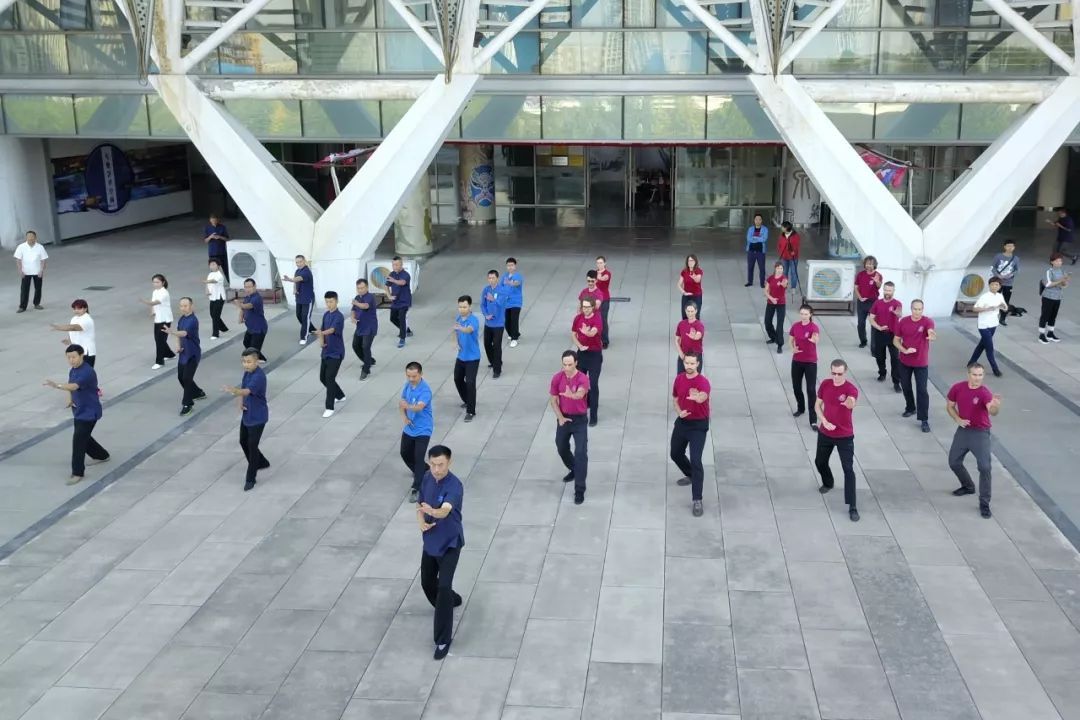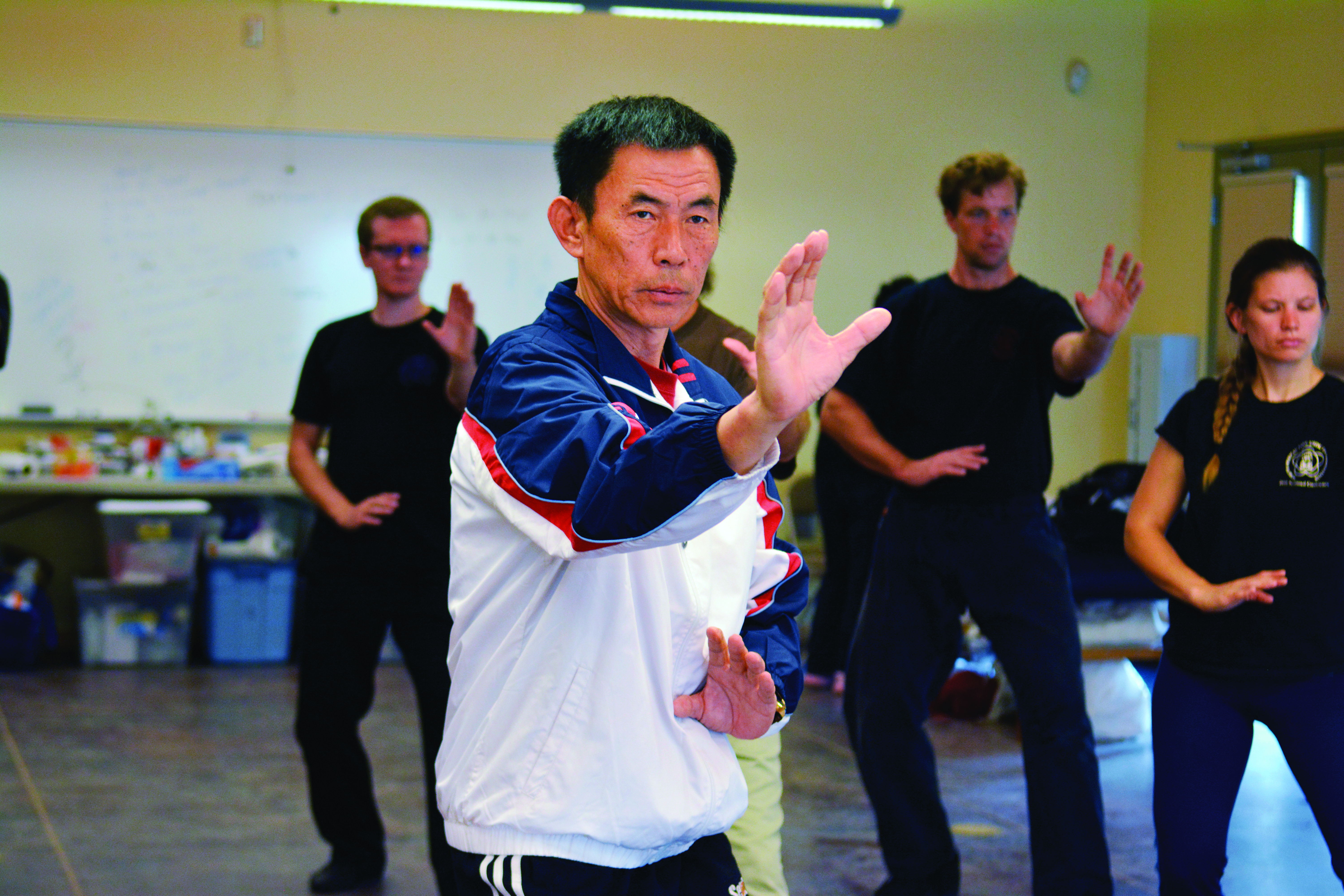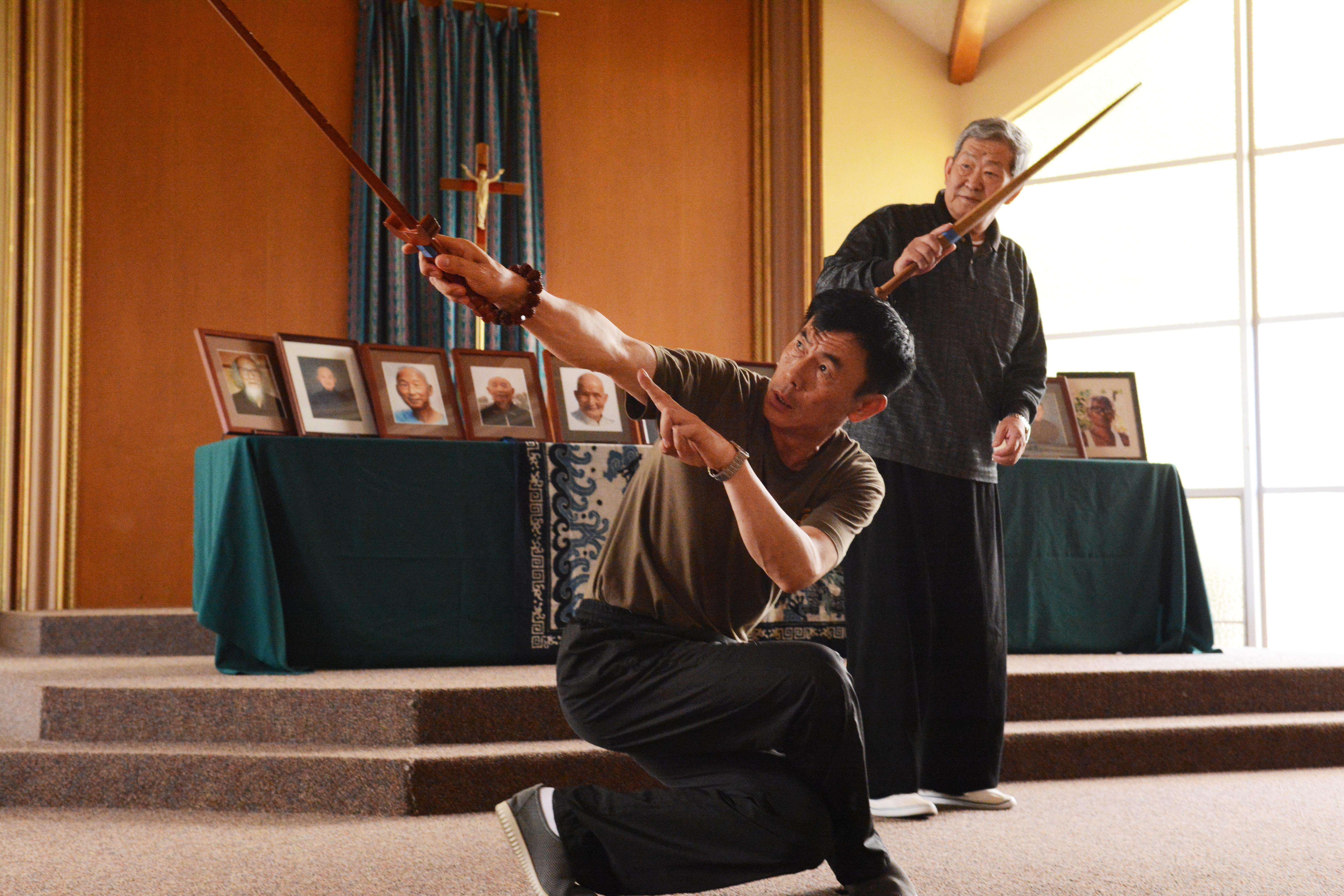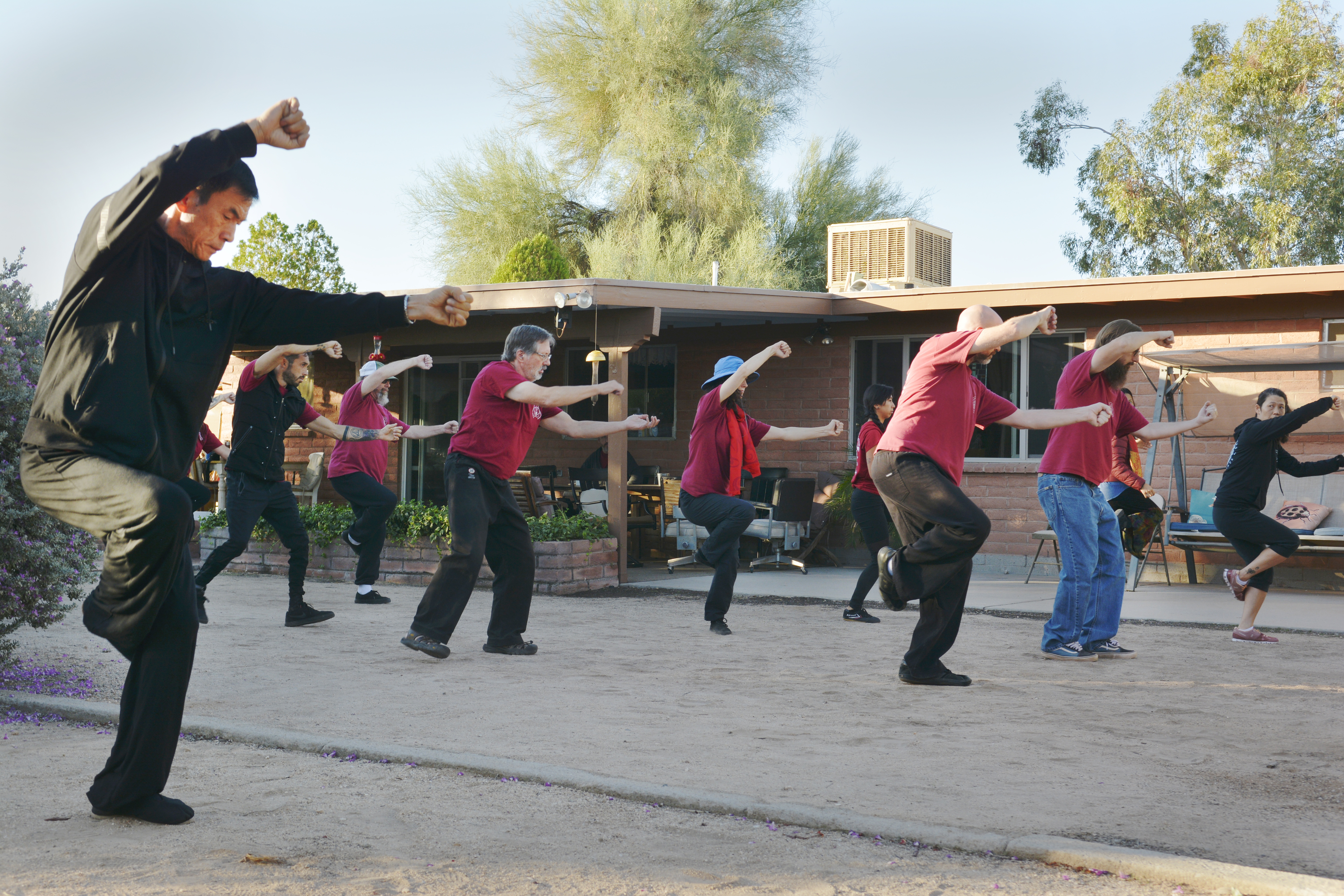Hero Mountain Xingyi Quan traces its roots to Li Jingzhai, one of the famous students of Li Luoneng, who is credited with bringing xingyi out of obscurity. One of Li Jingzhai’s students, Li Yingxun (Xiangzuo) settled in Ji’nan in 1932 and began a successful teaching career and his direct lineage holders continue teaching his style in Ji’nan to this day. Hero Mountain Xingyi is an orthodox style, which heavily emphasizes tightly coiled stance-work, combined with crisp and precise fajin (explosive power) expressions of the forms. The system centers on the five elements and twelve animals, and has an extensive curriculum of solo and two-person weapons forms.
Li Jingxuan and his son, Li Cang
The success and proliferation of Hero Mountain Xingyi Quan in Ji’nan can be attributed to Li Jingxuan, who founded the Hero Mountain Xingyi Quan main training site in 1980.
Li Jingxuan did not start his xingyi training until his 30s. He had worked hard in business at the expense of his health. He studied xingyi diligently and lived until the age of 106. His son, Li Cang, continues his legacy.
Li Cang became a formal disciple of Liu Fengcai in 1984 to study bagua. It was through this connection that Li Cang became friends with Liu Shuhang, who introduced him to the North American Tang Shou Tao Association in 2013. Li Cang has been teaching association members ever since and formally took American and Canadian disciples in 2018.
Taiji 128
The Hero Mountain curriculum also includes a unique taiji quan form said to be created by Yang Luchan. This form, called the Taiji 128, puts emphasis on the practical techniques of Yang style Taiji. It is an obscure form not practiced by many people outside the Hero Mountain Xingyi family. Li Jingxuan is a fourth generation inheritor of the form.






